Case studies - Livelihoods Centre
CWB - TITULO - Programme guidance
Programme Guidance
Nested Applications
Navigation Menu
- Introduction
- Search
Navigation
Asset Publisher

Case Study - Green Pearl Project: Livelihoods, the gateway for ecosystem restoration
Case Study of the Green Pearl Project that shows how nature-based solutions can provide multiple economic, social, and environmental benefits to vulnerable communities.
Livelihoods Objectives: Productivity Enhancement, Natural resources protection, Gain and application of knowledge, Economic Security,
Cross-cutting themes: climate change, rural, Case studies,
All: climate change, rural, Case studies,
>Show more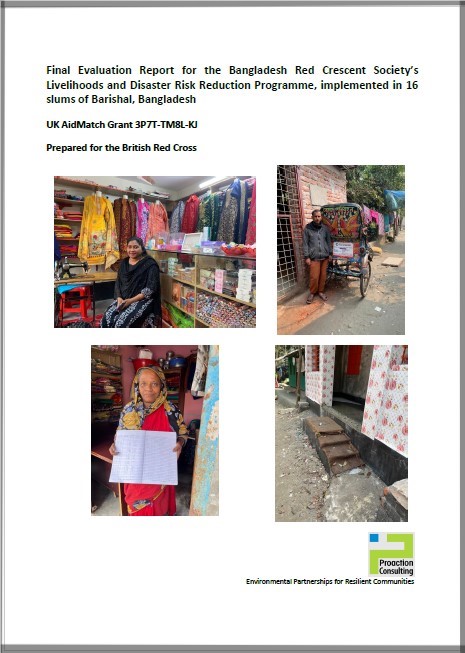
Livelihoods and DRR programme in Barishal City, BANGLADESH - HES Assessment and Final Evaluation
HES Assessment Report and Final Evaluation of a Livelihoods and Disaster Risk Reduction programme implemented in 16 slum communities of Barishal City by the Bangladesh Red Crescent, with support from the British Red Cross, from 2021 to 2024. The programme was designed around a series of mutually supporting activities which included safeguarding livelihoods and jobs against hazards, promoting women’s leadership, and sustainable income access for participating community members – women and youth, primarily.
>Show more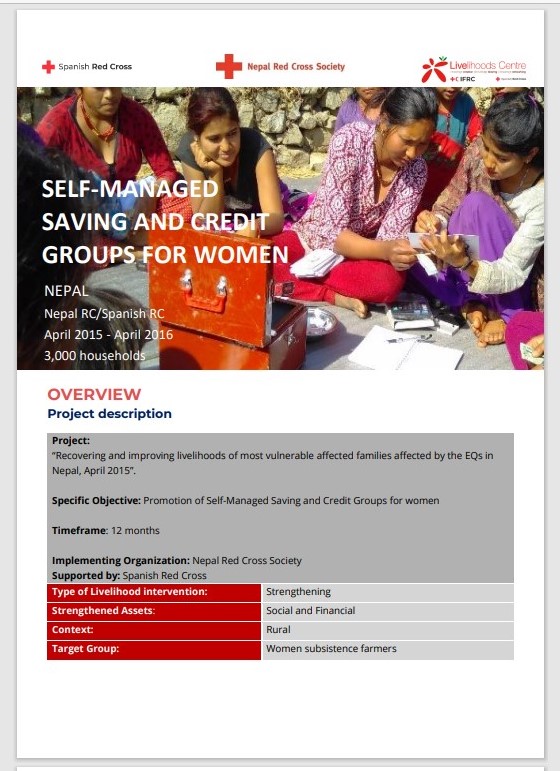
Case Study: Self managed Saving and Credit Groups for women in Nepal
A case study from the integrated post-earthquake recovery programme in Nepal to build safer and more resilient communities. Given the context and the findings during the assessment, the field teams investigated different potential methodologies to promote saving and credit groups (SCGs) in these communities. The "Village Saving and Loan" (VSL) approach offered several relevant advantages to this context.
Cross-cutting themes: gender, associations, microcredits and micro-financing, rural, cash and voucher assistance,
Livelihoods Objectives: Access and ownership to productive assets, Economic Security, Case studies,
All: Access and ownership to productive assets, Economic Security, Case studies,
>Show more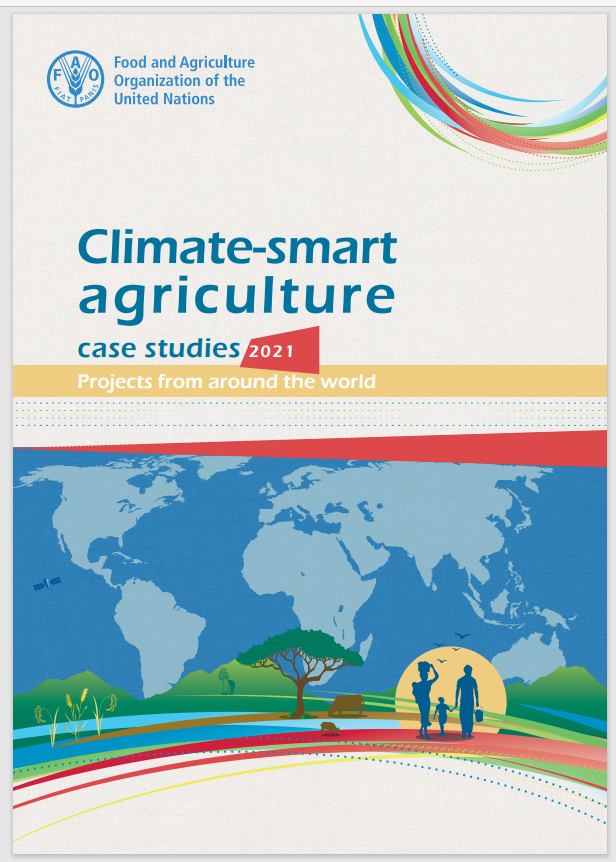
Climate Smart Agriculture: Case Studies from around the World. 2021. FAO
Climate-smart agriculture (CSA) has grown from a concept into an approach implemented throughout the world by all types of stakeholders. These case studies discuss context-specific activities that contribute to three CSA pillars: sustainably increasing agricultural productivity and incomes, adapting and building resilience of people and agri-food systems to climate change, and reducing and/or removing greenhouse gas emissions where possible. Many of the case studies pay special attention to smallholder farmers, including women and indigenous groups, who are particularly affected by the impacts of climate change.
Livelihoods Objectives: Productivity Enhancement,
Cross-cutting themes: climate change, Case studies,
All: climate change, Case studies,
>Show more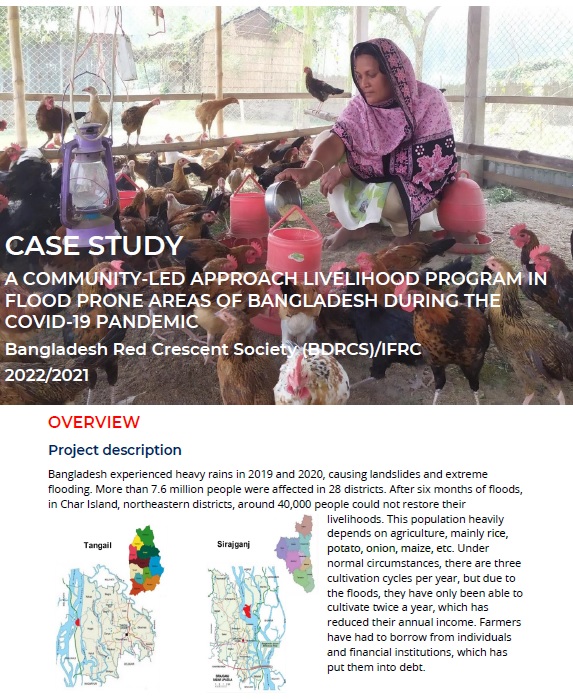
Case Study: A community-led livelihoods approach in flood-prone areas of Bangladesh during COVID19 pandemic
Livelihoods' support provided by BDRCS and IFRC during COVID19 pandemic strengthened the income-generating activities of targeted vulnerable families, building resilience to future flooding.
Cross-cutting themes: IGA, climate change, rural, protection,
Livelihoods Objectives: Access and ownership to productive assets, Case studies,
All: Access and ownership to productive assets, Case studies,
>Show more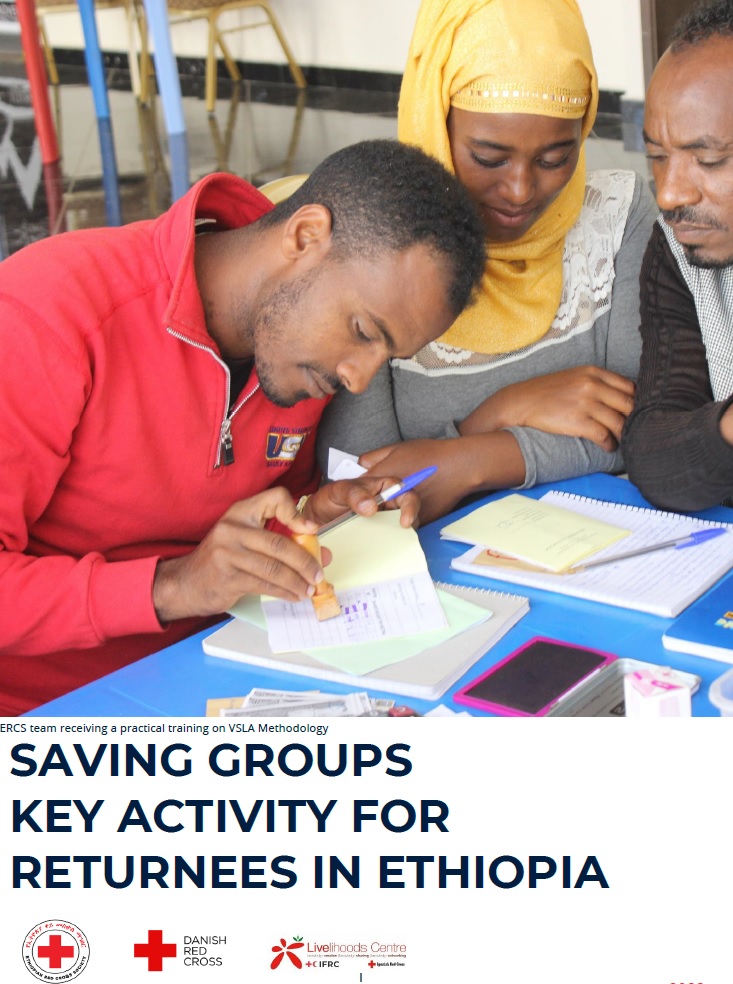
Case Study: Saving groups. Key activity for returnees in Ethiopia
This case study provides an example of how Saving Groups have become one of the key project activities for returnees' economic and social reintegration, promoting economic, social and cultural solidarity among communities. Participating in a saving group has permitted returnees to improve their financial inclusion –having access to savings, credit and micro-insurance- and diversify and strengthen their businesses. Saving groups are also improving connectedness and social cohesion among host communities and returnees.
Cross-cutting themes: gender, associations, IGA, microcredits and micro-financing, rural, urban, migration,
All: Case studies,
>Show more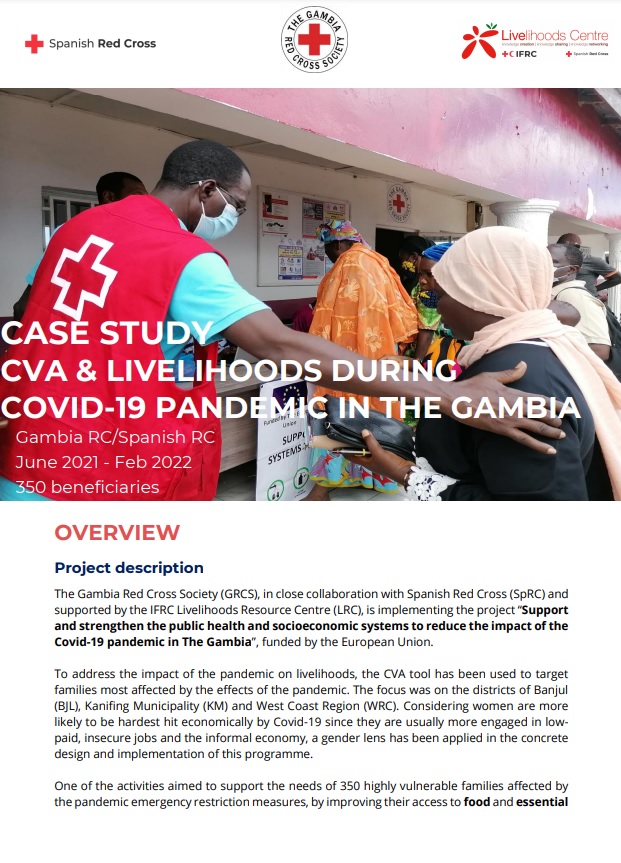
Case Study: CVA and livelihoods during COVID 19 pandemic in The Gambia
This case study provides an example of how the Covid19 pandemic and the movement restrictions had an impact on livelihoods and how this situation was addressed through Cash and Vouchers Assistance (CVA) to support the most affected families in the districts of Banjul, Kanifing Municipality and West Coast Region of The Gambia. As the hardest hit economically were women, mostly engaged in low-paid, insecure jobs and the informal economy, a gender lens was applied in the design and implementation of this programme.
Cross-cutting themes: gender, cash and voucher assistance, protection,
All: Case studies,
>Show more
Cost-Benefit Analysis (CBA) Case Study: Livelihoods Preparedness in Namibia
Cost/Benefit Analysis (CBA) is an evidence-based quantitative tool used to demonstrate the costs and benefits and natural trade-offs of investment in community actions. CBA is a useful decision-making tool that complements financial analysis as it evaluates non-market benefits and costs in more detail, taking into consideration such variables as environmental costs, biodiversity preservation, disaster preparedness, informal activities, social opportunity cost of labour, and opportunity cost of investment.
The CBA study carried out in Namibia in 2015 showed a benefit-cost ratio (BCR) of 3.7 for the period 2009 to 2014, which demonstrates a positive net impact and economic return on resources invested in the Zambezi River Basin Initiative (ZRBI) in the country.
Livelihoods Objectives: Natural resources protection,
All: Case studies,
>Show more
Case Study: Building Resilience in the Zambezi River Basin, Zambia
This case study provides an example of a community-based food security and livelihoods initiative implemented in Sesheke and Kazungula in Zambia that can be used as a blueprint for other regions facing similar challenges. This action, implemented from 2012 to 2015, was part of the IFRC's “Zambezi River Basin Initiative" (ZRBI) which aims to ensure that communities along the Zambezi river basin are better prepared to meet the challenges of disasters caused by drought or flooding in the short term, and more resilient and secure in the long term.
Livelihoods Objectives: Natural resources protection,
All: Case studies,
>Show more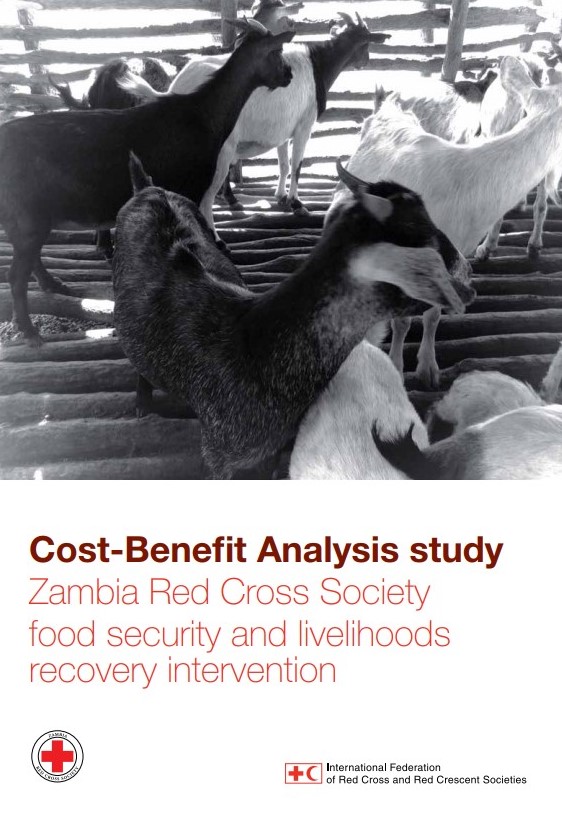
Cost Benefit Analysis (CBA) Case Study: Food Security and Livelihoods in Zambia
Cost/ Benefit Analysis (CBA) is an evidence-based quantitative tool used to demonstrate the costs and benefits and natural trade-offs of investment in community/ public actions. CBA is a useful decision-making tool that complements financial analysis as it evaluates non-market benefits and costs in more detail, taking into consideration such variables as environmental costs, biodiversity preservation, disaster preparedness, informal activities, social opportunity cost of labour, and opportunity cost of investment.
This series of Cost Benefit Analysis (CBA) studies analyze the food security, livelihoods and resilience initiatives supported by the IFRC in Namibia, Zambia and Rwanda. The studies for Namibia and Zambia were based on the Zambezi River Basin Initiative (ZRBI).
Livelihoods Objectives: Access to Market and Services,
Cross-cutting themes: rural, protection, Case studies,
All: rural, protection, Case studies,
>Show more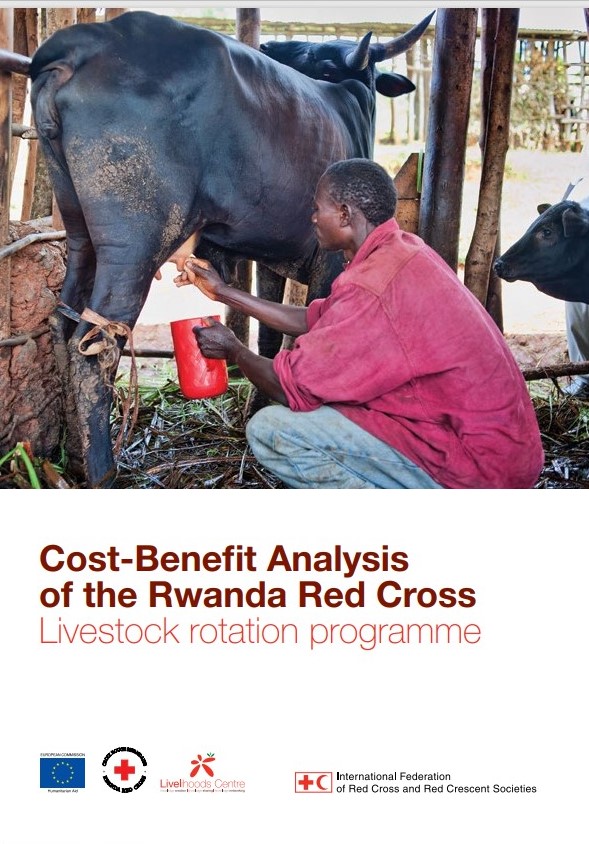
Cost Benefit Analysis (CBA) Case Study: Livestock Rotation Programme in Rwanda
Cost/Benefit Analysis (CBA) is an evidence-based quantitative tool used to demonstrate the costs and benefits and natural trade-offs of investment in community/ public actions. CBA is a useful decision-making tool that complements financial analysis as it evaluates non-market benefits and costs in more detail, taking into consideration such variables as environmental costs, biodiversity preservation, disaster preparedness, informal activities, social opportunity cost of labour, and opportunity cost of investment.
This CBA case study focuses on the Livestock Rotation Programme carried out in Rwanda from 2008 to 2014 with IFRC support.
Cross-cutting themes: rural,
Livelihoods Objectives: Access and ownership to productive assets, Economic Security, Case studies,
All: Access and ownership to productive assets, Economic Security, Case studies,
>Show more
Solar-powered water infrastructure in Zambezi and Kavango regions, Namibia
This case study focused on highlighting the solar powered infrastructure installed at community gardens as a key element in providing a more reliable water supply and way forward for small scale farmers. The assessment showed that through the installation of the solarpowered water supply the beneficiaries increased significantly their crop and vegetable harvests which is directly related to the availability, quality and quantity of the water.
Livelihoods Objectives: Productivity Enhancement, Natural resources protection,
Cross-cutting themes: climate change, rural, Case studies,
All: climate change, rural, Case studies,
>Show more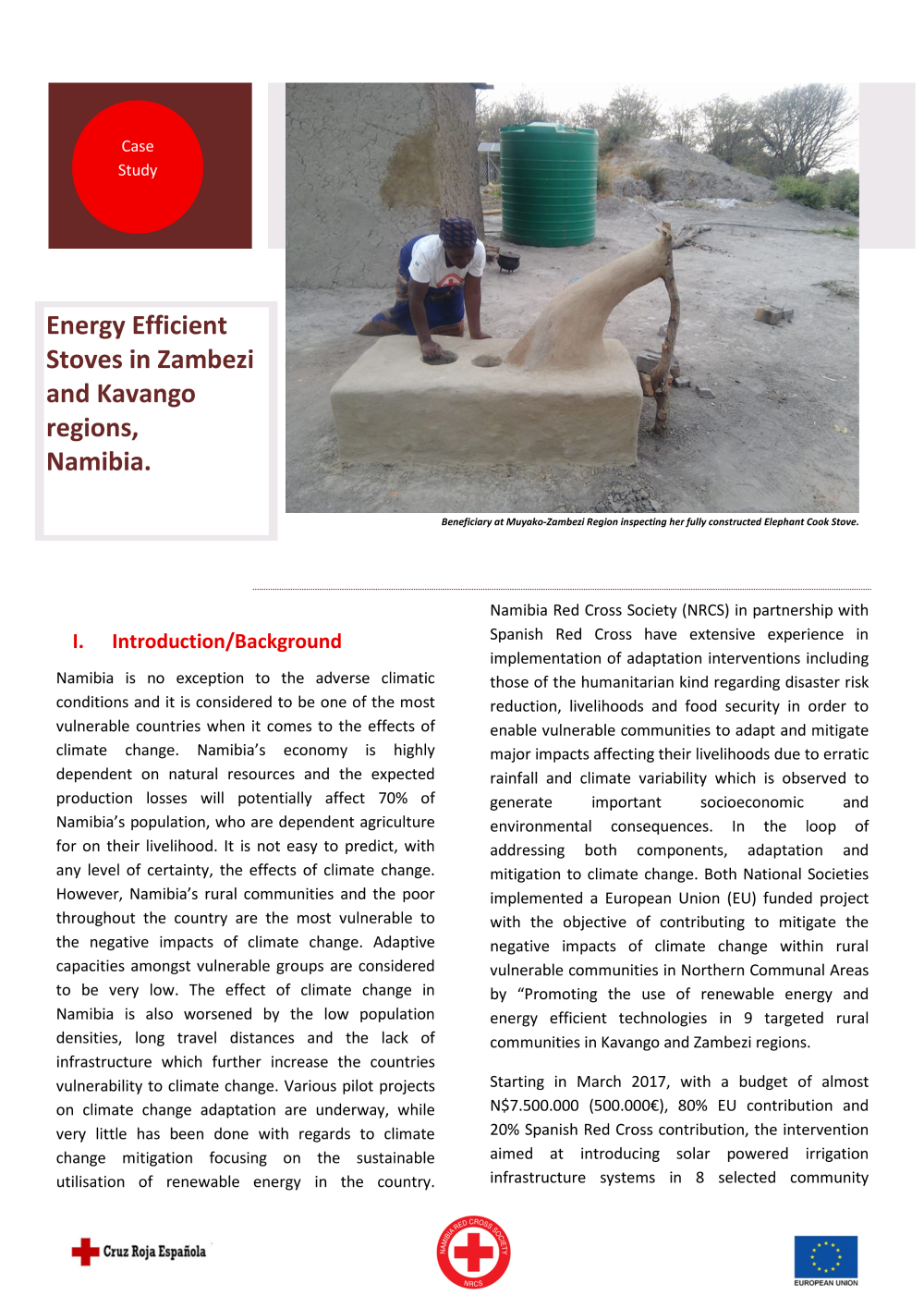
Energy efficient stoves in Zambezi and Kavango regions, Namibia
This case study focuses on energy-efficient stoves. The document describes the main success factors of the model, the impact of the use of these stoves at the environmental, economic and health levels (reduction of CO2 emissions, savings of between 50-60% in wood consumption 50-60%, etc.), and includes recommendations for replication of the model.
Livelihoods Objectives: Natural resources protection,
Cross-cutting themes: climate change, rural, Case studies,
All: climate change, rural, Case studies,
>Show more
Caisses de Résilience in Mali: Integrated approach to promote women’s empowerment and nutrition conditions of vulnerable households
Case study focussed on the implementation of "Les Caisses de Resilience" approach in Mali.
The approach is based on simultaneous support to strengthen productive, financial and social capacities of vulnerable households and their community-based organizations (women’s groups, farmers’ organizations, etc.).
This FAO "resilient and integral" approach is similar to the Mothers' Club approach developed by CRCR Movement.
Livelihoods Objectives: Food Security and Nutrition, Access to Market and Services, Productivity Enhancement,
Cross-cutting themes: associations, microcredits and micro-financing, Case studies,
All: associations, microcredits and micro-financing, Case studies,
>Show more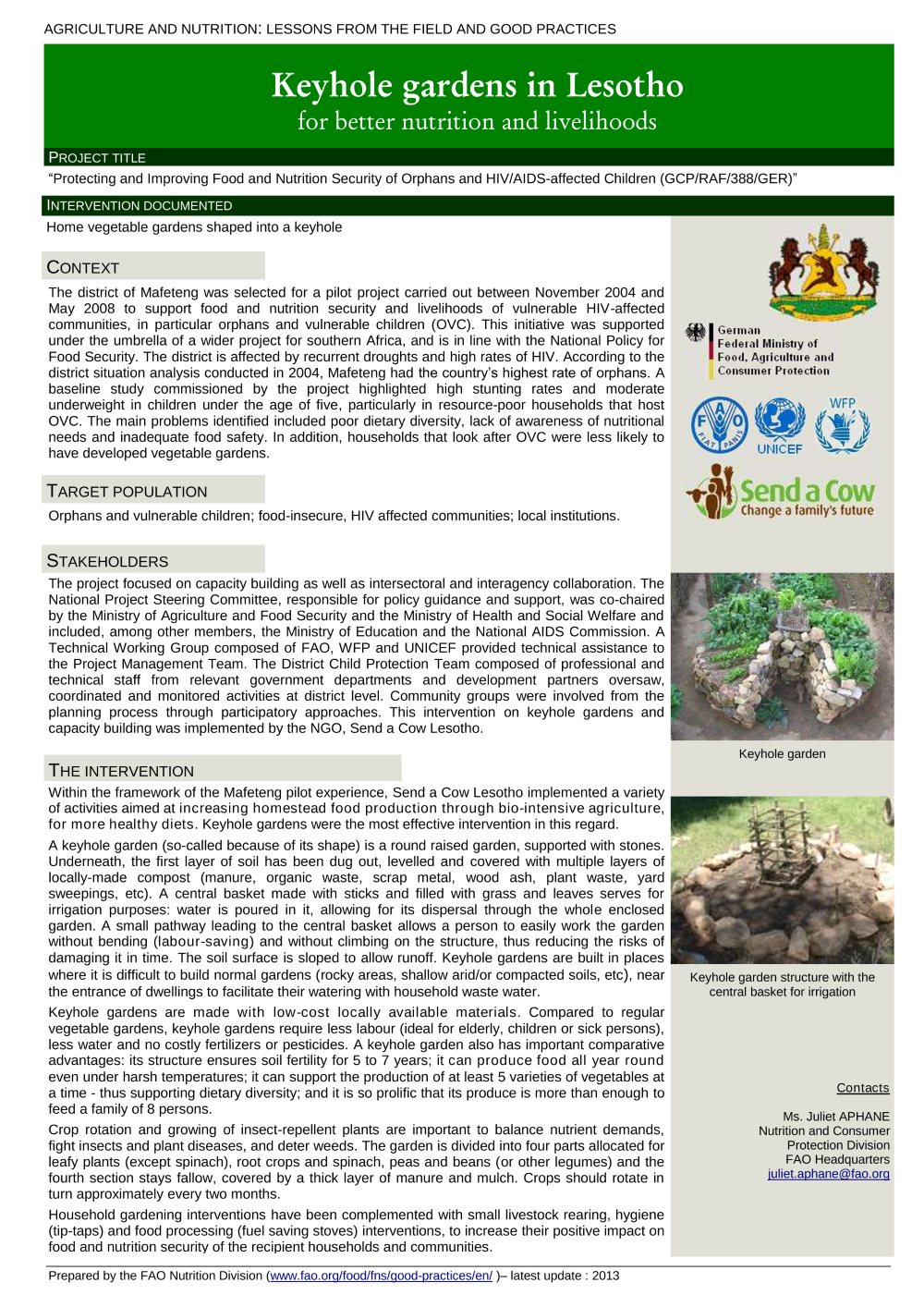
Case Study: Keyhole gardens for better nutrition and livelihoods in Lesotho
Within the frame of the project "Protecting and Improving Food and Nutrition Security of Orphans and HIV/AIDS-affected Children" implemented in Lesotho, this case study highlights the keyhole garden's model, presenting the main elements of the intervention, as well as the lessons learned.
Keyhole gardens in this project were identified as the most effecive way to increase homestead food production through bio-intensive agriculture,for more healthy diets.
Livelihoods Objectives: Food Security and Nutrition,
Cross-cutting themes: rural, nutrition, Case studies,
All: rural, nutrition, Case studies,
>Show more

